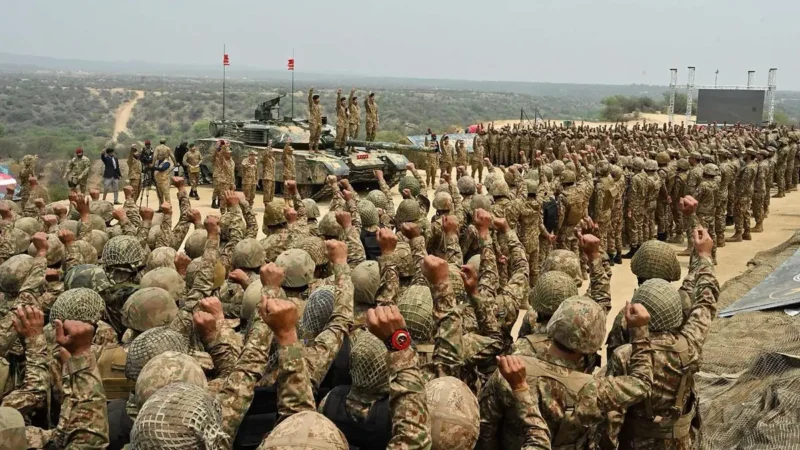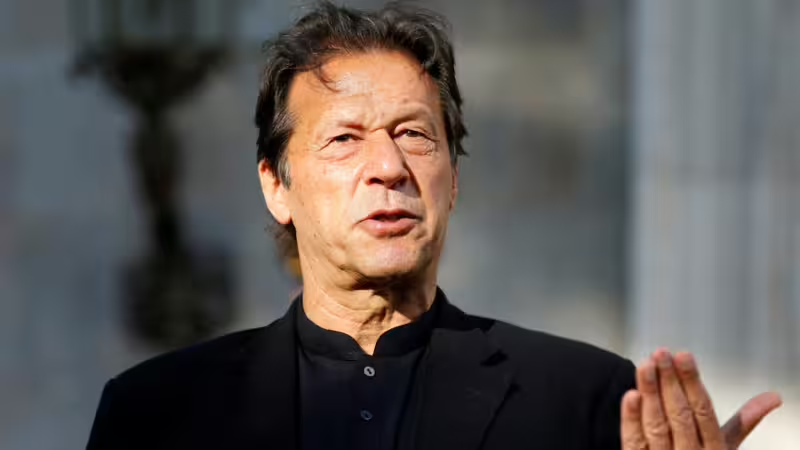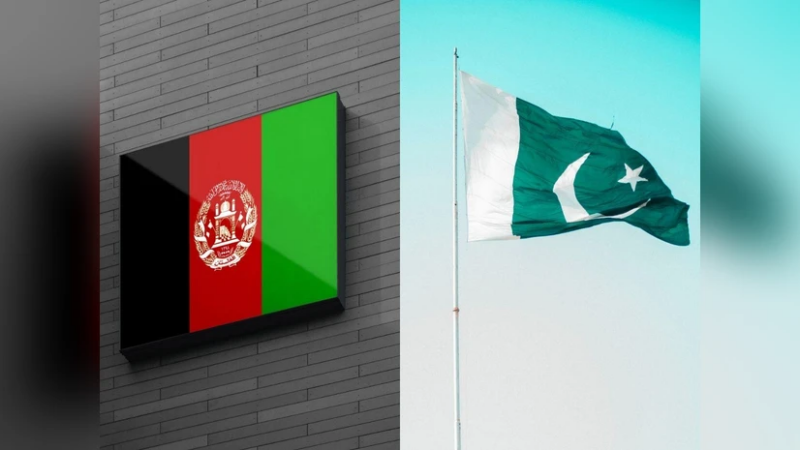What Is Hezbollah?

Military experience gained from fighting in Syria’s civil war and decades of clashes with Israel has strengthened the Iran-backed group, but politically, its clout among Lebanon’s populace may be waning.
Summary
- Hezbollah wields significant power in Lebanon, where it operates as both a Shiite Muslim political party and militant group.
- It opposes Israel and Western powers operating in the Middle East, and it functions as a proxy of Iran, its largest benefactor.
- The group has faced unprecedented scrutiny from the Lebanese public amid the country’s political and economic crisis.
Introduction
Hezbollah is a Shiite Muslim political party and militant group based in Lebanon, where its extensive security apparatus, political organization, and social services network have fostered its reputation as “a state within a state.” Founded in the chaos of the fifteen-year Lebanese Civil War, the Iran-backed group is driven by its opposition to Israel and its resistance to Western influence in the Middle East.
With its history of carrying out global terrorist attacks, parts of Hezbollah—and in some cases the entire organization—have been designated as a terrorist group by the United States and many other countries. In recent years, long-standing alliances with Iran and Syria have transformed Hezbollah into an increasingly effective military force, one that experts say would pose a formidable challenge in the event of new fighting against its longtime enemy Israel. At the same time, however, Hezbollah officials and other leaders in Lebanon are facing public discontent as the nation verges on failure, and Hezbollah’s political power could be shrinking.
How did Hezbollah originate?
Hezbollah emerged during Lebanon’s fifteen-year civil war, which broke out in 1975 when long-simmering discontent over the large, armed Palestinian presence in the country reached a boiling point. Various Lebanese sectarian communities held different positions on the nature of the Palestinian challenge.
Under a 1943 political agreement, political power is divided among Lebanon’s predominant religious groups—a Sunni Muslim serves as prime minister, a Maronite Christian as president, and a Shiite Muslim as the speaker of Parliament. Tensions between these groups evolved into civil war as several factors upset the delicate balance. The Sunni population had grown with the arrival of Palestinian refugees in Lebanon, while Shiites felt increasingly marginalized by the ruling Christian minority. Amid the infighting, Israeli forces invaded southern Lebanon in 1978 and again in 1982 to expel Palestinian guerrilla fighters that used the region as their base to attack Israel.
A group of Shiites influenced by the theocratic government in Iran—the region’s major Shiite government, which came to power in 1979—took up arms against the Israeli occupation. Seeing an opportunity to expand its influence in Arab states, Iran and its Islamic Revolutionary Guard Corps (IRGC) provided funds and training to the budding militia, which adopted the name Hezbollah, meaning “The Party of God.” It earned a reputation for extremist militancy due to its frequent clashes with rival Shiite militias, such as the Amal Movement, and attacks on foreign targets, including the 1983 suicide bombing of barracks housing U.S. and French troops in Beirut, in which more than three hundred people died. Hezbollah became a vital asset to Iran, bridging Shiite Arab-Persian divides as Tehran established proxies throughout the Middle East.
Hezbollah bills itself as a Shiite resistance movement, and it enshrined its ideology in a 1985 manifesto that vowed to expel Western powers from Lebanon, called for the destruction of the Israeli state, and pledged allegiance to Iran’s supreme leader. It also advocated an Iran-inspired Islamist regime, but emphasized that the Lebanese people should have the freedom of self-determination.
How is it organized?
Hezbollah is led by Hassan Nasrallah, who took over as secretary-general in 1992 after Israel assassinated the group’s cofounder and previous leader, Abbas Al-Musawi. Nasrallah oversees the seven-member Shura Council and its five subcouncils: the political assembly, the jihad assembly, the parliamentary assembly, the executive assembly, and the judicial assembly. The U.S. State Department estimates that Hezbollah has tens of thousands of members and other supporters worldwide.
Hezbollah controls much of Lebanon’s Shiite-majority areas, including parts of Beirut, southern Lebanon, and the eastern Bekaa Valley region. Although Hezbollah is based in Lebanon, its manifesto clarifies that its operations, especially those targeting the United States, are not confined by domestic borders: “The American threat is not local or restricted to a particular region, and as such, confrontation of such a threat must be international as well.” The group has been accused of planning and perpetrating acts of terrorism against Israeli and Jewish targets abroad, and there is evidence of Hezbollah operations in Africa, the Americas, and Asia.
Iran provides most of Hezbollah’s training, weapons, and funding, sending the group hundreds of millions of dollars each year, according to the State Department. Hezbollah receives a lesser level of support from the Bashar al-Assad regime in Syria, as well as financing from legal businesses, international criminal enterprises, and the Lebanese diaspora.
What role has it played in Lebanese politics?
Hezbollah has been a fixture of the Lebanese government since 1992, when eight of its members were elected to Parliament, and the party has held cabinet positions since 2005. The party marked its integration into mainstream politics in 2009 with an updated manifesto that was less Islamist than its predecessor and called for “true democracy.” The most recent national elections, in 2022, saw Hezbollah maintain its 13 seats in Lebanon’s 128-member Parliament, though the party and its allies lost their majority.
Hezbollah manages a vast network of social services that include infrastructure, health-care facilities, schools, and youth programs, all of which have been instrumental in garnering support for Hezbollah from Shiite and non-Shiite Lebanese alike.
At the same time, Hezbollah maintains its military arm. Under the 1989 Taif Agreement, which was brokered by Saudi Arabia and Syria and ended Lebanon’s civil war, Hezbollah was the only militia allowed to keep its arms. The International Institute for Strategic Studies estimated in 2020 that the militia had up to twenty thousand active fighters and some twenty thousand reserves, with an arsenal of small arms, tanks, drones, and various long-range rockets. Analyst and Brigadier General (Ret.) Assaf Orion, of Israel’s Institute for National Security Studies, says Hezbollah possesses “a larger arsenal of artillery than most nations enjoy,” and a 2018 report from the Center for Strategic and International Studies called it “the world’s most heavily armed non-state actor.”
Critics say Hezbollah’s existence violates UN Security Council Resolution 1559—adopted in 2004—which called for all Lebanese militias to disband and disarm. The UN Force in Lebanon (UNFIL), first deployed in 1978 to restore the central government’s authority, remains in the country and part of its mandate is to encourage Hezbollah to disarm.
“Hezbollah is the world’s most heavily armed non-state actor.”
Center for Strategic and International Studies
In October 2019, Hezbollah became a target of mass protests. Government mismanagement and years of slow growth had saddled Lebanon with one of the world’s highest public debt burdens, at 150 percent of its gross domestic product (GDP). Hundreds of thousands of Lebanese citizens disillusioned by the economic slump called for the government, including Hezbollah, to cede power to a new, technocratic leadership. The formation of a Hezbollah-backed government under Prime Minister Hassan Diab in January 2020 failed to appease antiestablishment protesters, who saw it as a win for the country’s entrenched elites. Unemployment, poverty, and debt soared under the new government, and demonstrations persisted for months despite lockdowns amid the COVID-19 pandemic. The protest movement spanned religious backgrounds, and even Lebanese Shiites openly criticized Hezbollah.
The group faced further censure in August 2020, when a UN-backed tribunal found Salim Jamil Ayyash, a Hezbollah affiliate, guilty of the 2005 assassination of former Lebanese Prime Minister Rafiq Hariri. Ayyash and the other three living defendants, who were acquitted, were tried in absentia. The whereabouts of the four are not publicly known, and Hezbollah has refused to surrender them to the tribunal.
Where does it stand on Israel?
Israel is Hezbollah’s main enemy, dating back to Israel’s occupation of southern Lebanon in 1978. Hezbollah has been blamed for attacks on Jewish and Israeli targets abroad, including the 1994 car bombings of a Jewish community center in Argentina, which killed eighty-five people, and the bombings of the Israeli Embassy in London. Even after Israel officially withdrew from southern Lebanon in 2000, it continued to clash with Hezbollah, especially in the disputed Shebaa Farms border zone. Periodic conflict between Hezbollah and Israeli forces escalated into a monthlong war in 2006, during which Hezbollah launched thousands of rockets into Israeli territory.
Hezbollah and Israel have yet to relapse into full-blown war, but the group reiterated its commitment to the destruction of the Israeli state in its 2009 manifesto. In December 2018, Israel announced the discovery of miles of tunnels running from Lebanon into northern Israel that it claimed were created by Hezbollah. The following year, Hezbollah attacked an Israeli army base—the first serious cross-border exchange in more than four years. In August 2021, Hezbollah fired more than a dozen rockets in response to Israeli air strikes in Lebanon; it was the first time the group claimed responsibility for rockets fired into Israel since the 2006 Israel-Hezbollah war.
Hezbollah has attacked Israel with sophisticated anti-ship and anti-armor weapons, which Western officials say are supplied by Iran. Orion told CFR that the more precise weaponry being provided by Iran ensures that Hezbollah will become an increasingly dangerous threat to Israel.
What role has Hezbollah played in the Syrian Civil War?
Hezbollah finds a loyal ally in Syria, whose army occupied most of Lebanon during Lebanon’s civil war. The Syrian government remained as a peacekeeping force in Lebanon until it was driven out in the 2005 Cedar Revolution, a popular protest movement against the foreign occupation. Hezbollah had unsuccessfully pushed for Syrian forces to remain in Lebanon, and has since remained a stalwart ally of the Assad regime. In return for Tehran’s and Hezbollah’s support, experts say, the Syrian government facilitates the transfer of weapons from Iran to the militia.
Hezbollah’s experience fighting in Syria has helped it become a stronger military force.
Hezbollah publicly confirmed its involvement in the Syrian Civil War in 2013, and it sent some seven thousand militants to assist Iranian and Russian forces in supporting the Syrian government against largely Sunni rebel groups. Hezbollah withdrew many of its fighters in 2019, attributing the decision to the Assad regime’s military success. Analysts say fighting in Syria helped Hezbollah become a stronger military force, though it faces discontent from Lebanese who feel that focusing on the war led the group to neglect its domestic duties. Hezbollah’s support from Sunnis in particular has waned over the group’s backing of the Assad regime. Hezbollah’s involvement in the war also opened it to further attacks by Israel, which has regularly launched air strikes against Iran-allied forces in Syria.
What is the extent of Hezbollah’s involvement in the 2023 Israel-Hamas war?
Following the October assault on Israel by Hamas, the Iran-backed Palestinian militant group that governs the Gaza Strip, Hezbollah has fired shells across the Israel-Lebanon border in a show of what the group’s leaders called “solidarity” with Hamas, and several Hezbollah militants reportedly attempted to infiltrate Israel. Iran and Hezbollah likely advised and trained Hamas on how to attack Israel, experts say, though Hamas maintains that neither was involved planning its 2023 operation.
Hezbollah has signaled a willingness to further support Hamas in this war, which could pose a serious challenge for Israel and trigger further regional instability. “An explosion in violence at the [Israel-Lebanon] border is likely to provoke a conflagration and Israel would have to fight on two fronts,” writes CFR expert Ray Takeyh. Analysts such as CFR’s Bruce Hoffman note that the Israeli military’s impending ground invasion of Gaza could push Hezbollah to launch a major attack on Israel, which would come at a tremendous human cost given that the group possesses greater military capabilities than Hamas. But how far Hezbollah will go remains unclear. Experts say that it could be reluctant to wade too deeply into the conflict given the risk of jeopardizing its political position at home.
How have the United States and other countries treated the group?
U.S. policymakers see Hezbollah as a global terrorist threat. The United States designated Hezbollah a foreign terrorist organization in 1997, and several individual Hezbollah members, including Nasrallah, are considered specially designated global terrorists, which subjects them to U.S. sanctions. The Barack Obama administration provided aid to Lebanon’s military with the hope of diminishing Hezbollah’s credibility as the country’s most capable military force. However, Hezbollah’s and the Lebanese military’s parallel efforts to defend the Syrian border from the Islamic State and al-Qaeda-affiliated militants made Congress hesitant to send further aid [PDF], for fear that Hezbollah could acquire it.
In 2015, the U.S. Congress passed the Hizballah International Financing Prevention Act, which sanctions foreign institutions that use U.S. bank accounts to finance Hezbollah. Lawmakers amended it in 2018 to include additional types of activities. Additionally, the Donald Trump administration sanctioned some of Hezbollah’s members in Parliament as part of its “maximum pressure” campaign against Iran. While Trump’s approach disrupted Iran’s economy, analysts say the country’s increasingly self-sufficient proxies have weathered the worst of the sanctions.
President Joe Biden’s administration has continued sanctioning individuals connected to Hezbollah’s financing network, including Ibrahim Ali Daher, head of the group’s Central Finance Unit. In 2021, the Treasury Department announced sanctions targeting an international finance network accused of laundering tens of millions of dollars through regional financial systems to benefit Hezbollah and Iran.
The European Union (EU) has taken a less aggressive approach to Hezbollah. The bloc designated Hezbollah’s military arm a terrorist group in 2013 over its involvement in a bombing in Bulgaria and its backing of the Assad regime. In 2014, the EU’s police agency, Europol, and the United States created a joint group to counter Hezbollah’s terrorist activities in Europe. In recent years, several European countries have taken a stronger stance. The Parliament of the United Kingdom deemed all of Hezbollah a terrorist group in 2019, followed by the German government in 2020.
Hezbollah has scorned the largely Sunni Gulf Arab countries over their alliances with the United States and European powers. The Gulf Cooperation Council—comprising the seven Arab states of the Persian Gulf, with the exception of Iraq—considers Hezbollah a terrorist organization. Additionally, Saudi Arabia and the United States co-lead the Terrorist Financing Targeting Center, created in 2017 to disrupt resource flows to Iran-backed groups such as Hezbollah.
What is the future of the organization?
Experts say that Hezbollah’s international network is expanding, but that the group isn’t eager for outright war with Israel or the United States. Instead, some analysts say, Hezbollah prefers covert operations and terrorist activities. Even Hezbollah’s threats of retaliation for the 2020 U.S. drone strike that killed Qasem Soleimani, the head of the IRGC’s elite Quds Force, have not materialized into reprisals.
Meanwhile, with Lebanon teetering on the brink of collapse, the group has seized opportunities to expand in its own backyard. For example, when the Lebanese government failed to respond effectively to countrywide fuel shortages in 2021, Hezbollah imported more than a million gallons of fuel from Iran via passage through Syria, violating U.S. sanctions on Tehran.
Despite Hezbollah’s efforts to bolster credibility on its home front, many Lebanese distrust the group for its alleged involvement in the 2020 Beirut port explosions, which killed over two hundred people. A judicial probe into the blasts is investigating several Hezbollah-backed politicians for suspected negligence, though it has repeatedly stalled due to obstruction from Hezbollah and other political factions.
Some experts say Hezbollah is losing its hold on Lebanon given the anger spreading even in its traditional strongholds. The surge in independent and antiestablishment candidates elected to Parliament in 2022 signaled that many in Lebanon are dissatisfied with Hezbollah and other longtime power holders. Additionally, increased support for the Lebanese Forces party, which wants to disarm Hezbollah, could indicate that many voters no longer see it as the country’s protector, experts say.






